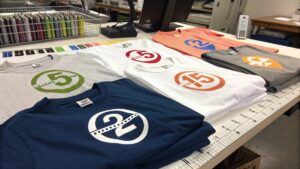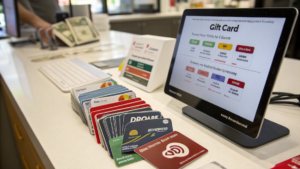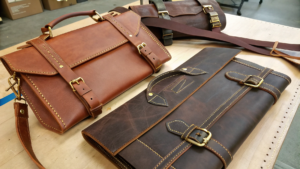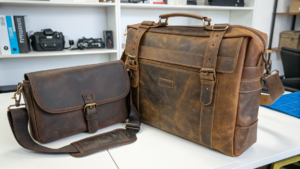How Do You Get Custom Embroidered Shirts That Last?
You want your custom shirt to stand out and hold up over time. But with so many options, how do you find embroidered shirts that truly showcase your design and last? Are you tired of designs that fade or unravel after a few washes?
To get custom embroidered shirts that last, focus on high-quality services that prioritize good thread and stitching techniques. Look for providers that offer detailed craftsmanship over speed, ensuring the design is deeply integrated into the fabric, not just sitting on top.
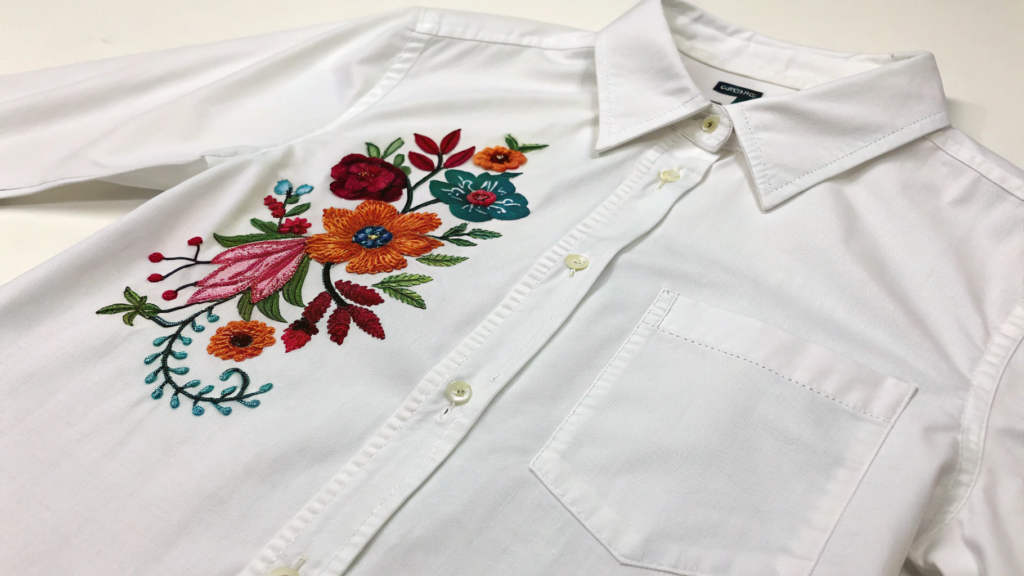
I have always loved custom apparel. It is a way to express yourself, promote a brand, or give a truly special gift. For me, embroidery has a unique charm. It feels more premium and enduring than a printed design. But I have learned that not all embroidered shirts are created equal. I want to share how to find services that give you a product that genuinely stands the test of time.
How Much Do Custom Embroidered Shirts Cost?
You are thinking about custom embroidered shirts1 for your team or for a special event. But what should you expect to pay? Do you know what factors influence the price of a quality embroidered shirt?
The cost of custom embroidered shirts varies greatly, typically ranging from $10 to $40 per shirt, depending on the design's complexity, stitch count2, quantity ordered, and the type of shirt. Digitizing fees for your design also add to the initial cost.
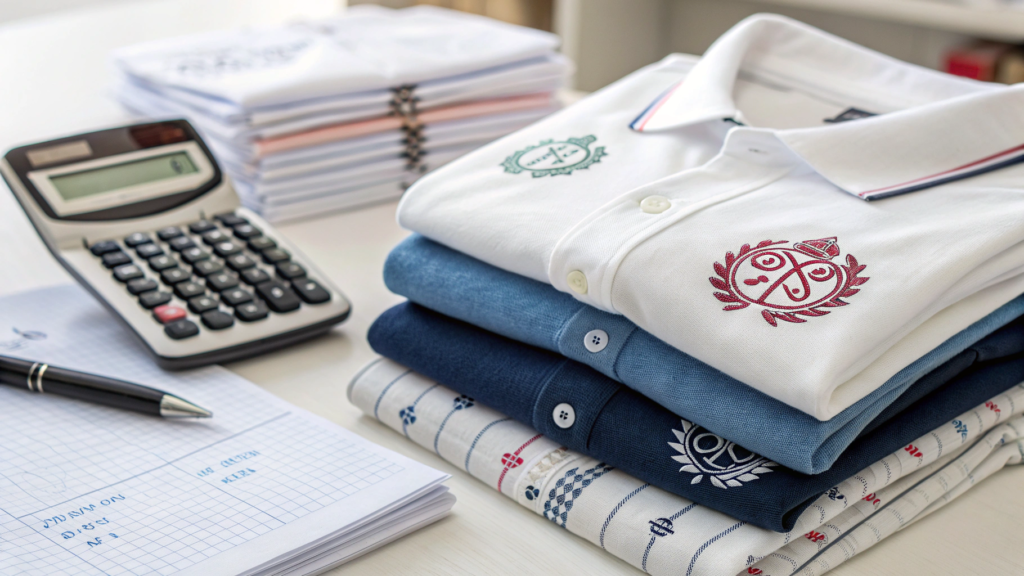
I have helped many clients navigate the pricing of custom apparel. It is easy to just look at the per-shirt cost, but that can be misleading. There are hidden costs and factors that change the final price. I want to break down what you are really paying for when you order custom embroidered shirts.
What Factors Influence Embroidery Pricing?
The price of an embroidered shirt is not just about the shirt itself. It is also about the design and the process of putting it on the fabric. Understanding these factors helps you get the best value.
- Stitch Count: This is the biggest factor. More stitches mean more thread and more machine time, which increases the cost. Complex designs have higher stitch counts.
- Number of Colors: While less impactful than stitch count, using many different thread colors can sometimes add to the cost, especially for smaller orders.
- Garment Type: The type and quality of the shirt itself affect the base price. A premium polo will cost more than a basic T-shirt.
- Order Quantity: Most embroiderers offer discounts for larger orders. The per-shirt price goes down when you buy in bulk.
- Digitizing Fee: This is a one-time fee to convert your design into a file that the embroidery machine can read. It ranges from $10 to $60, depending on design complexity.
| Cost Factor | Description | Impact on Price |
|---|---|---|
| Design Complexity | Intricacy of the design, number of fine details, and overall size. | Higher complexity means higher stitch count and thus higher cost. |
| Stitch Count | The total number of individual stitches required for the design. | Direct correlation: more stitches = higher cost. Usually priced per 1,000 stitches. |
| Order Volume | The total number of shirts in your order. | Volume discounts apply; per-item cost decreases with larger orders. |
| Garment Type | The quality, brand, and material of the shirt chosen for embroidery. | Premium shirts cost more than basic ones; impacts overall project cost. |
| Digitizing Fee | One-time charge to convert artwork into an embroidery machine-readable file. | An upfront cost that is spread out over the order quantity, making it cheaper per item for bulk orders. |
| Thread Colors | The number of different thread colors used in the design. | Minor impact, but some services may charge slightly more for many colors. |
I have seen clients try to cut costs too much and end up with a low-quality product. It is important to find a balance. Sometimes, paying a little more for a higher stitch count2 or better thread means your shirt will look good and last much longer. This saves money in the long run by avoiding replacements.
Is It Cheaper to Embroider or Print?
You are deciding how to put your design on a shirt. Should you go with embroidery or printing? Do you wonder which method will save you money in the long run?
Generally, printing is cheaper than embroidery, especially for large, colorful designs or bulk orders, due to lower labor and material costs. However, embroidery costs can become more competitive for smaller, simpler designs or when durability is a key concern, as its longevity can offset higher upfront costs.
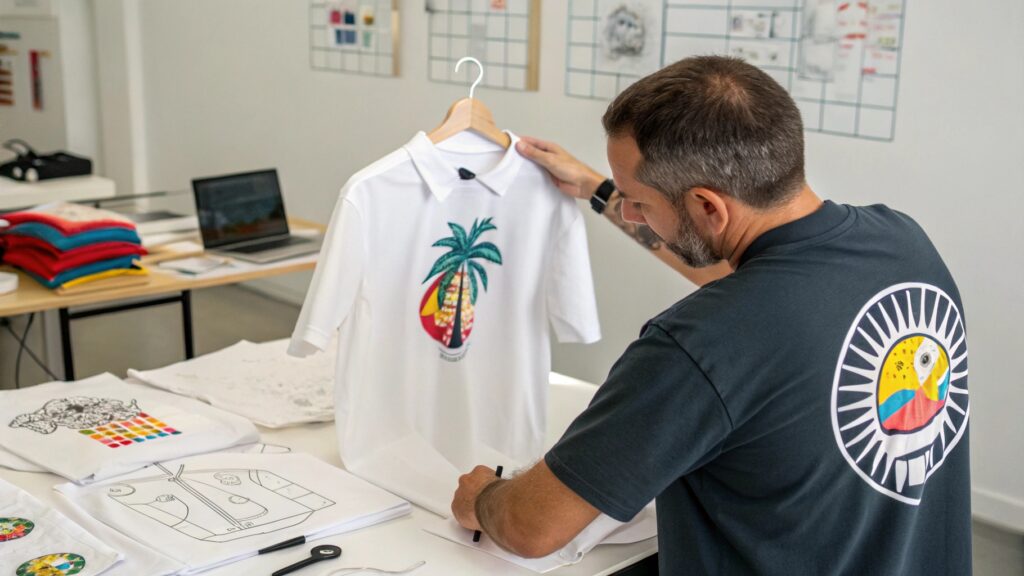
I often get asked this question. It is a common one, and the answer is not always straightforward. Each method has its own cost structure and best use cases. I want to explain the differences so you can make the best choice for your needs.
What Determines the Cost Difference?
The cost comparison between embroidery and printing depends on several factors. These include the design, the quantity, and the desired outcome.
- Setup Costs: Printing methods like screen printing can have higher initial setup costs due to creating screens. Embroidery has a one-time digitizing fee, which becomes cheaper per item on large orders.
- Design Complexity: Printing handles complex, multi-color graphics and fine details better and often more cheaply. Embroidery costs rise significantly with more stitches needed for detail.
- Materials: Ink for printing is generally less expensive per shirt than the thread used in embroidery, especially for large designs.
- Labor and Time: Embroidery often requires more specialized equipment and hands-on time per garment, leading to higher labor costs. Printing processes can be faster and more automated for large runs.
| Feature | Embroidery | Printing (e.g., Screen Printing) | Cost Implications |
|---|---|---|---|
| Initial Setup | Digitizing fee (one-time, then reusable). | Screen creation (per color, per design). | Embroidery often cheaper for repeat orders of same design. |
| Design Detail | Best for simpler logos, text, bold designs. | Handles complex graphics, gradients, photos. | Printing cheaper for intricate, multi-color designs. |
| Cost Per Item | Varies by stitch count; higher for low quantity. | Varies by number of colors and quantity; lower for bulk. | Printing often cheaper for high volume, complex prints. |
| Fabric Suitability | Thicker fabrics (polos, jackets, caps). | Wider range of fabrics, including thin T-shirts. | Influences garment choice and overall project cost. |
| Appearance | Textured, raised, premium look. | Flat, smooth, vibrant. | Perceived value: Embroidery often seen as more upscale. |
I have seen both methods produce great results. If you need a large number of shirts with a big, colorful graphic for an event, printing is likely more cost-effective. If you want a classic, durable logo on a polo shirt for staff uniforms, embroidery is usually the better choice. It is about matching the method to the purpose.
Does Embroidery Last Longer Than Print?
You want your custom shirt design to stay looking good for a long time. Does embroidery really hold up better than printing through many washes and wears? Are you looking for the most durable option?
Yes, embroidery generally lasts much longer than most printing methods. The threads are stitched directly into the fabric, making the design resistant to fading, cracking, or peeling, often outlasting the garment itself. Printed designs, especially lower quality ones, can degrade over time.
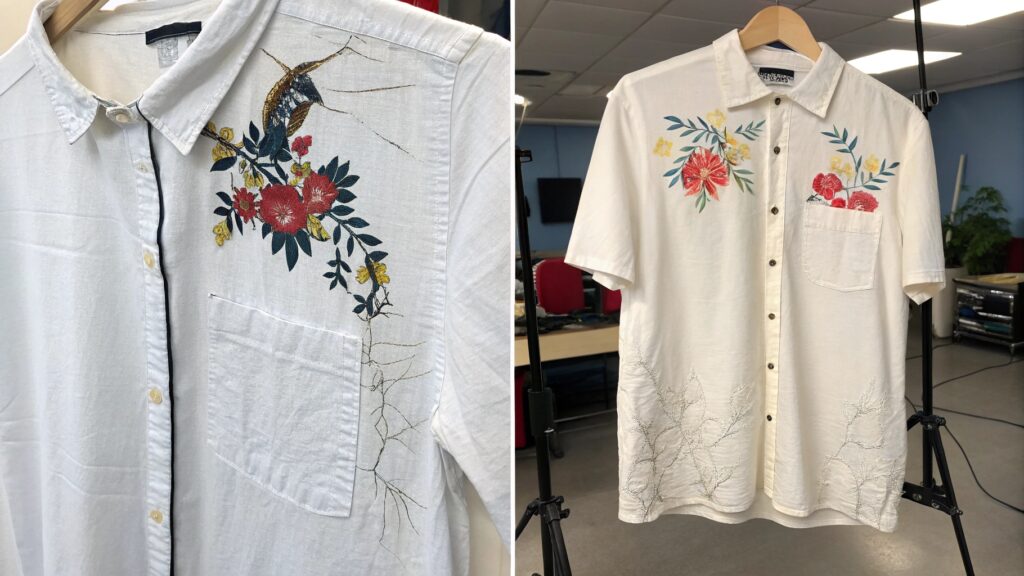
I have personally worn shirts with both embroidered and printed designs for years. From my experience, embroidery nearly always outlasts print. The durability of an embroidered design is one of its biggest selling points for me. I want to explain why embroidery has this advantage and what makes it so resilient.
Why Is Embroidery More Durable?
The durability of embroidery comes from its very nature. It is a physical application of thread, not just ink on a surface. This makes it inherently more robust.
- Thread Integration: Embroidery stitches thread directly into the fabric. It becomes a part of the garment's structure. Printed designs sit on top of the fabric.
- Resistance to Wear: Threads are much more resistant to friction, stretching, and daily wear compared to ink. They do not crack or peel.
- Color Fastness: Embroidery threads are typically colorfast, meaning their colors remain vibrant through many washes. Printed inks can fade, especially with harsh detergents or sunlight.
- Washability: Embroidered designs can withstand frequent washing and drying cycles without significant degradation. Some printed designs are more sensitive to heat and agitation.
| Durability Aspect | Embroidery | Printing (e.g., Screen Printing, DTG) | Longevity Outcome |
|---|---|---|---|
| Application Method | Thread stitched into fabric. | Ink applied onto fabric surface. | Embroidery is integrated; print is superficial. |
| Resistance to Wear | Highly resistant to cracking, peeling, and fading. | Can crack, fade, or peel, especially with heavy wear or washes. | Embroidery maintains integrity longer. |
| Wash Cycles | Withstands numerous washes without significant degradation. | Durability varies greatly; some fade or crack after dozens of washes. | Embroidery typically outlasts the garment itself. |
| Color Retention | Thread colors remain vibrant and true over time. | Ink colors can fade due to sunlight, washing, or harsh chemicals. | Embroidery colors maintain vibrancy more consistently. |
| Fabric Stress | Generally holds up well on thicker fabrics; less prone to puckering. | Can stiffen thin fabrics; prone to cracking on stretchy materials. | Embroidery is more resilient to fabric movement and tension. |
| Texture | Raised, textured feel; adds depth. | Smooth, flat feel. | The physical texture of embroidery contributes to its robust nature. |
I always tell my clients that if you want a design that will truly last, especially for uniforms, workwear, or items worn often, embroidery is the way to go. It offers a premium look that endures, which reflects well on any brand or personal style. It is about investing in quality that stands up to time.
Conclusion
Custom embroidered shirts truly last and elevate any design. Costs depend on complexity and quantity, but embroidery generally outlasts printing. My journey shows that choosing quality craftsmanship ensures your unique style or brand endures, stitch by stitch.

